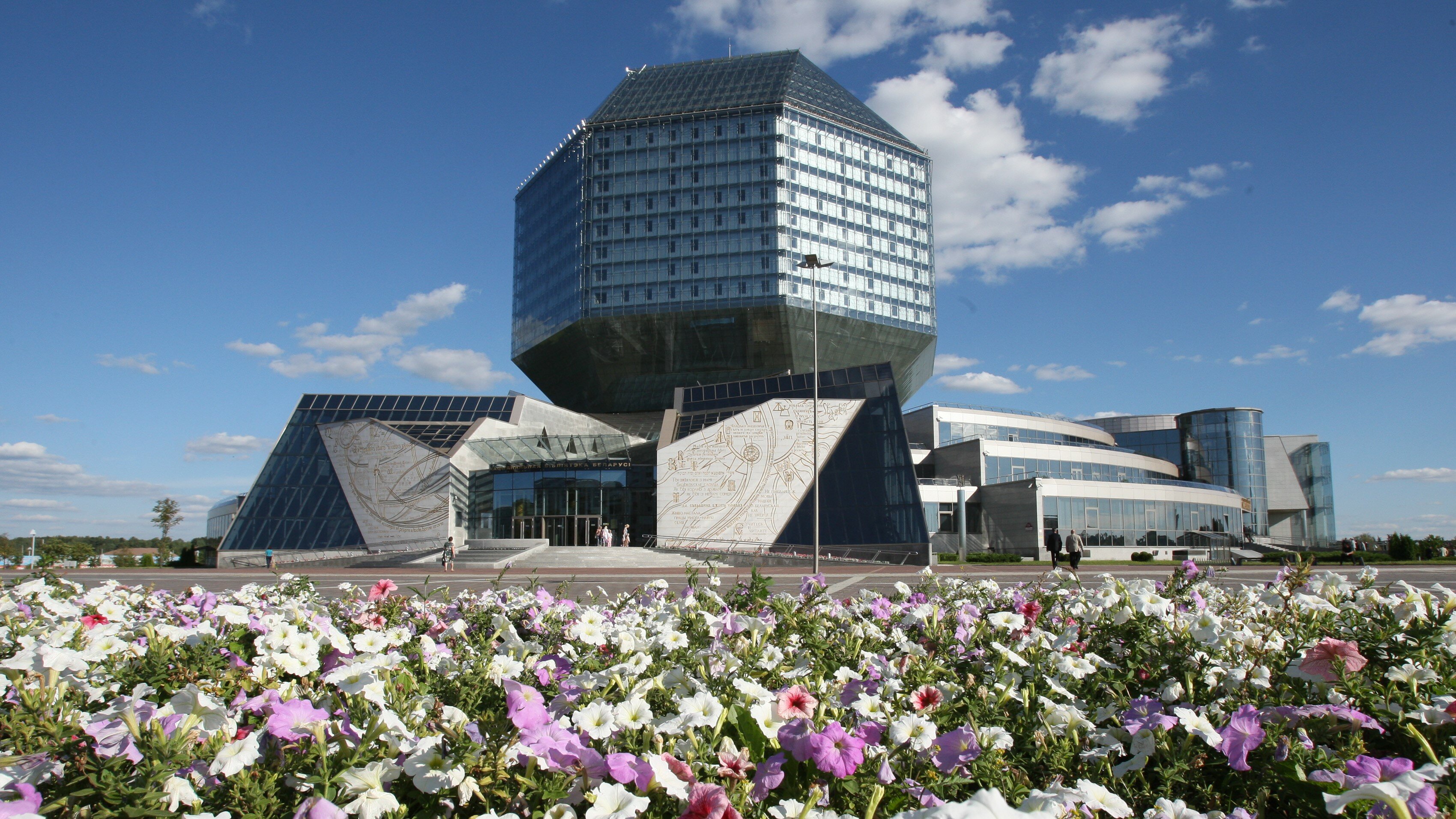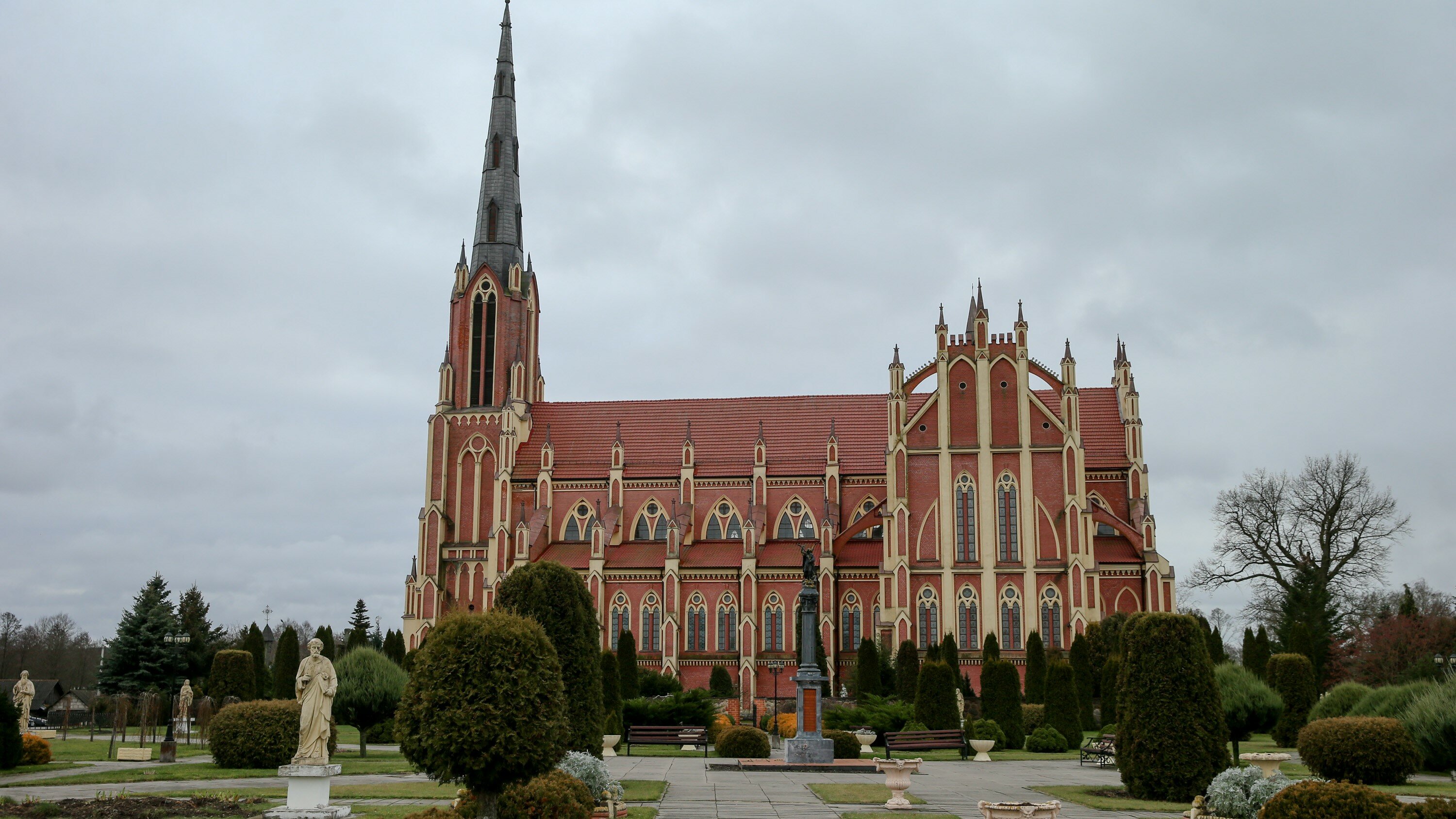Tourist Attractions
Architectural, Residential and Cultural Complex of the Radziwill Family at Nesvizh

Nesvizh Castle is the family seat of the Radziwill family who owned vast land properties in the territory of Belarus and Lithuania. This is their most famous estate and one of the main places of interest in present-day Belarus.
All aristocrats of the Grand Duchy of Lithuania attended balls in Nesvizh. The castle had a portrait gallery, a theater, a kunstkamera, and a library with a collection of 20,000 books.
Nesvizh Castle is not just a former seat of magnates, a museum and a park. It is also one of the most mysterious places in Belarus. Legend has it that the castle is haunted by the ghost of Barbara Radziwill, the wife of King Sigismund II Augustus of Poland.
Mir Castle Complex

Mir Castle, along with Nesvizh Castle, is among the oldest and most beautiful castles in Europe. The castle is a fascinating blend of architectural styles, from the Gothic and Baroque, to the Renaissance.
Originally, the castle belonged to the Ilinicz family and later came into possession of the Belarusian magnate family of Radziwill.
There are so many underground chambers in the castle that not all of them have been explored so far. According to one of local legends, a special underground tunnel connected the castles in Mir and Nesvizh. Presumably, it was wide enough for two carriages to drive side by side.
Mir Castle annually welcomes thousands of visitors from various countries. Tourists come to marvel at the grand building and take part in knight festivals. The castle regularly hosts festivals of medieval, classical, jazz, and electronic music.
Kossovo Palace and Tadeusz Kosciuszko’s Museum-Estate

Two remarkable tourist attractions of Belarus – Kossovo Palace and the Museum-Estate of Tadeusz Kosciuszko – are located a kilometer away from the town of Kossovo in Brest Oblast.
The palace in the Gothic Revival style belonged to the Puslowski family. Its fairytale look and splendor earned the palace the name ‘a knight’s reverie’.
For several hundred years, Kossovo was in possession of famous dynasties of the Chreptowicz, Sanguszko, Flemming, Czartoryski, and Sapieha. In 1821, the estate was purchased by Wojciech Puslowski. He opened a carpet factory in Kossovo and had around 60 churches built or restored in the neighborhood.
The architectural splendor of Kossovo Palace attracts travelers to this day. After many years of abandonment, this ‘miniature castle’ with 12 towers that symbolize months of the year, was reopened to visitors. The large-scale restoration work is still underway, but people can already admire the beauty of the palace and wander through the halls that are waiting for the return of their former grandeur.

The Puslowski family took pride in the fact that their estate was close to the estate in Merechovshchina, the birthplace of Tadeusz Kosciuszko, a national hero of Poland and the USA and an honorary citizen of France. The house of the famous Belarusian native was reconstructed in 2004 on the foundations of the 18th century with the use of the 19th-century drawings.
Palace of the Rumyantsevs and the Paskeviches in Gomel

The Gomel Palace and Park Ensemble is one of the most beautiful specimens of architecture of Belarus. Today the unique museum complex in the center of Gomel comprises a palace of the Rumyantsevs and the Paskeviches, a chapel with a burial vault, a conservatory, a watchtower, and a magnificent ancient park.
It is the largest fully preserved country estate in Belarus. Count Rumyantsev was a favorite of Empress Catherine II. Regiment commander Paskevich added the current regal look to the place. The palace is a museum now.
The aristocrat residence in Gomel is one of Belarus’ most interesting and popular museums, a major historical, cultural, and educational center.
Brest Fortress

The Brest Fortress is one of the top landmarks of Belarus, a symbol of courageous resistance, resilience and heroism during the Great Patriotic War.
The fortress was built in the 1830s and completely changed the layout and architectural style of Brest: the city was moved as a whole to a new location to the east of the citadel.
On 22 June 1941 the fortress garrison took the brunt of the Nazi invasion and held the line while completely surrounded for over a month. The citadel was granted the honorary title Hero Fortress after the war in recognition of the courage and heroism the fortress defenders demonstrated in June 1941.
The memorial complex Brest Hero Fortress is one of the main draws of Brest and entire Belarus.
Khatyn Memorial

Located in Logoisk District, Minsk Oblast, the village of Khatyn was burned down during the Great Patriotic War to become a symbol of the tragedy of the entire Belarusian nation, a reminder of horrors of the war.
The village and virtually all its residents (149 people, including 75 kids) were wiped out by the Nazi in March 1943.
Residents of 628 Belarusian villages were burned alive during the Great Patriotic War. As many as 186 villages were not rebuilt. A memorial complex was built at the location of Khatyn in 1969 in memory of the dead. The complex symbolizes courage and unbroken spirit of the nation that sacrificed so much in the name of freedom.
Great Patriotic War Museum

The museum’s history began during the war. In 1942 the Central Committee of the Communist Party of the BSSR, which had been evacuated to Moscow, set up a commission to gather documents and materials relating to the Great Patriotic War. In September 1943 the Central Committee decided to set up a museum of history of the fight of the Belarusian people against the German invaders during the Great Patriotic War. The creation of the first exposition of the museum began in Minsk in August 1944, shortly after the city was liberated. The Belarusian State Museum of the Great Patriotic War History was opened to the public in October 1944.
The museum was moved to a dedicated building in Minsk’s central square in 1966. A unique outdoor exposition of military hardware and weapons was opened next to the museum in 1977.
It was decided to build a new facility for the museum in 2010 upon the initiative of Aleksandr Lukashenko, President of Belarus.
The new building was opened on 2 June 2014 on the eve of Independence Day. The opening ceremony was dedicated to the 70th anniversary of Belarus’ liberation from the Nazi invaders. Today the Great Patriotic War Museum is one of the most interesting military history museums in the post-Soviet space. It is increasingly popular with Belarusians and foreign tourists.
Every year the museum is visited by about 500,000 tourists. With a floor area of over 3,000 square meters, the museum houses a collection of more than 8,000 artifacts related to the history of World War II. There is the Minsk Hero City Memorial and the Motherland Monument nearby.
National Library of Belarus

The new building of the National Library of Belarus was unveiled on 16 June 2006.
Today the National Library is not only the biggest repository of books in the country, but also a huge multi-purpose center.
The library has 9 million books, 20 reference rooms, and a museum of rare books and manuscripts. These are printed books, manuscripts, microcopies of documents, electronic and other materials in over 80 languages from all corners of Belarus and all over the world.
The National Library is also a popular tourist attraction. Its observation deck offers a picturesque view of the city from the height of 72 meters.
Trinity Church in Gervyaty

A magnificent neo-Gothic church which could be the pride of every capital city was built to replace a 1526 wooden church in the village of Gervyaty in 1903. This Roman Catholic Church is often called the Belarusian Notre-Dame and Little Switzerland for its beauty and grandeur.
The construction of the church was preceded by thorough preparation. A brick factory was built nearby and a roof slate was brought from Germany.
A 64-meter-high church, one of the highest churches in Belarus, was erected in the highest place in Gervyaty. There is a 6-meter-high cross on top of its spire. Since the day of its consecration, the Trinity Church has never closed its doors.
The church is surrounded by a magnificent park with over 2,000 exotic plants, statues of angels and apostles.
Savior and Saint Euphrosyne Convent in Polotsk

The Savior and Saint Euphrosyne Convent in Polotsk is one of the oldest and largest centers of Eastern Orthodoxy in the Republic of Belarus. It was founded by Princess Euphrosyne of Polotsk, a renowned enlightener and the first woman canonized by the Eastern Orthodox Church, in 1125.
Euphrosyne was the Reverend Mother of the convent for 45 years. During that period, the convent with a well-stocked library, an icon painting workshop, and a school became the center of enlightenment for Polotsk and its surroundings.
The relics of Saint Euphrosyne are kept in the convent. Many people flock to Polotsk on 5 June every year to honor the memory of Saint Euphrosyne.
A famous reliquary cross embellished with Christian relics brought from Constantinople and Jerusalem was made by master Lazar Bogsha on the order of Reverend Mother Euphrosyne in 1161. She believed that this sacred cross would heal the souls of Polotsk people and all believers. This unique cross is a masterpiece of global importance and a rare specimen of decorative art which dates back to the 12th century.
However, the Cross of Saint Euphrosyne of Polotsk went missing during the Great Patriotic War and has not been found since then.
An artist from Brest, Nikolai Kuzmich, recreated the Cross of Saint Euphrosyne of Polotsk in 1997. It took him five years. At the ceremony held in Saint Simeon Cathedral in Brest on 24 August 1997, the master handed over the sacral relic to the Belarusian Orthodox Church. The cross is now on display in the Savior and Saint Euphrosyne Convent in Polotsk.